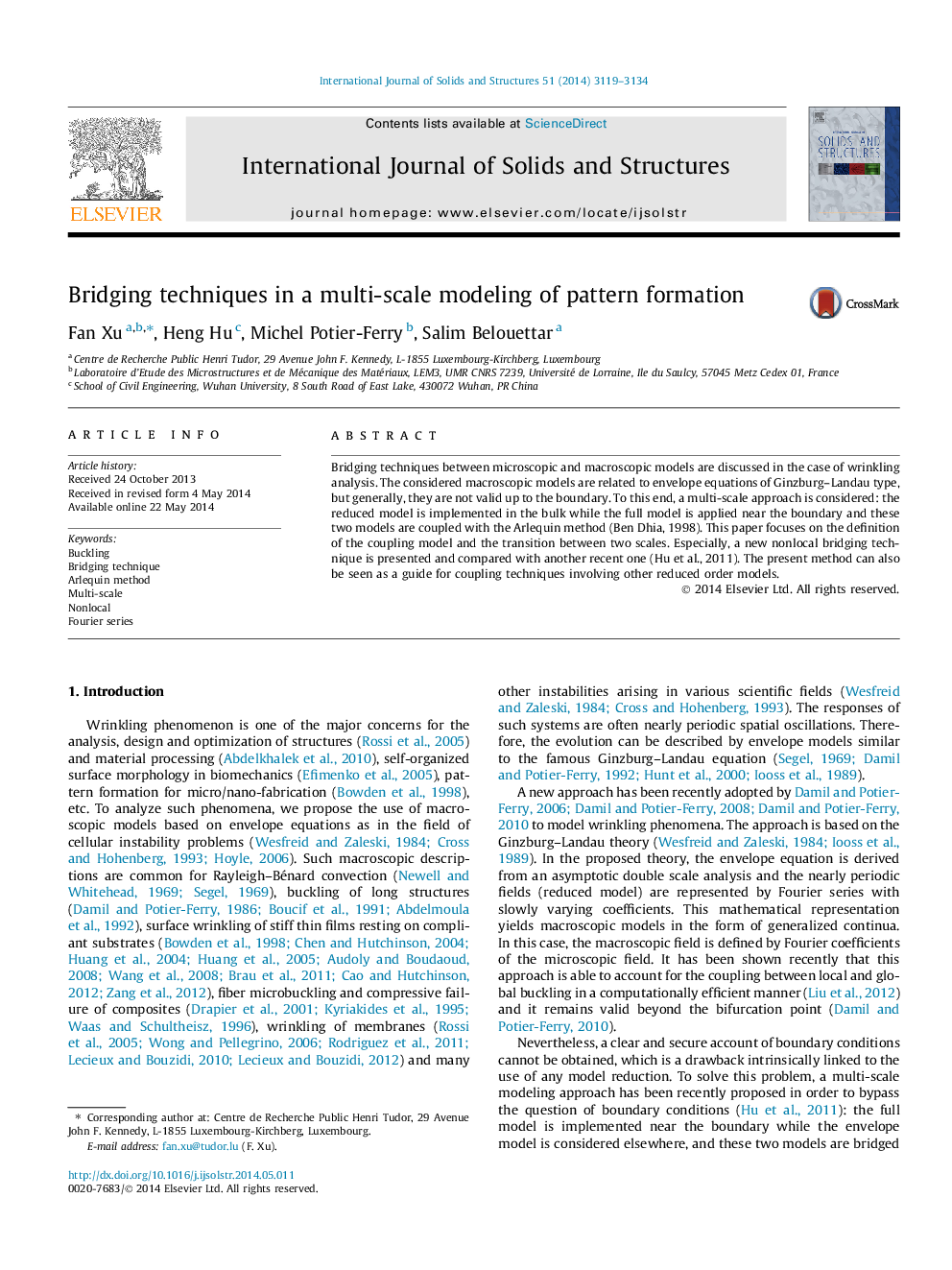| Article ID | Journal | Published Year | Pages | File Type |
|---|---|---|---|---|
| 277583 | International Journal of Solids and Structures | 2014 | 16 Pages |
•A new bridging technique based on a nonlocal reduction operator.•Discussion on the transition between a fine and a coarse model.•Analysis of a reduction-based operator defined by Fourier series.•New results concerning Ginzburg–Landau equation and Fourier series with variable coefficients.
Bridging techniques between microscopic and macroscopic models are discussed in the case of wrinkling analysis. The considered macroscopic models are related to envelope equations of Ginzburg–Landau type, but generally, they are not valid up to the boundary. To this end, a multi-scale approach is considered: the reduced model is implemented in the bulk while the full model is applied near the boundary and these two models are coupled with the Arlequin method (Ben Dhia, 1998). This paper focuses on the definition of the coupling model and the transition between two scales. Especially, a new nonlocal bridging technique is presented and compared with another recent one (Hu et al., 2011). The present method can also be seen as a guide for coupling techniques involving other reduced order models.
Graphical abstractFigure optionsDownload full-size imageDownload as PowerPoint slide
